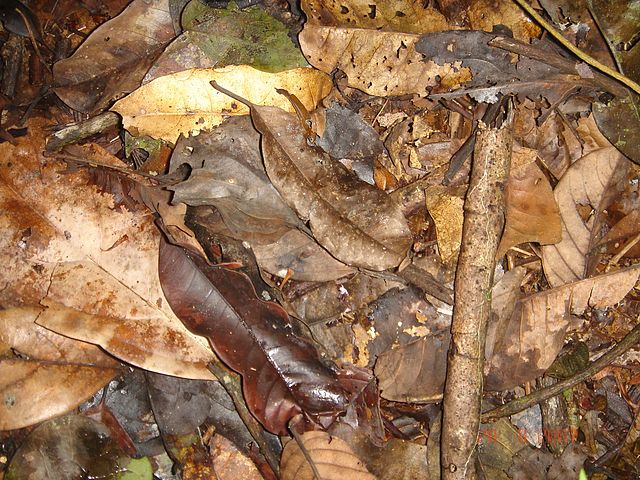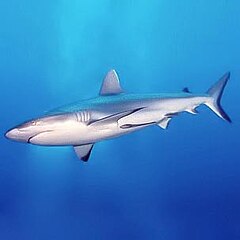technique of concealment through color or pattern From Wikipedia, the free encyclopedia
Camouflage is a visual disguise. Without it, an animal would be recognised easily. If the natural color of an animal makes it look like its surroundings, that is camouflage. One example is a tiger's stripes in the long grass.








Camouflage is a form of deception. The word camouflage comes from the French word camoufler, which means "to disguise".[1][2]
In nature, most animals blend into their environment or conceal their shape. They are very hard to see. This way they survive, and if they survive, then they can reproduce. There are exceptions: animals which are dangerous to eat (e.g. wasps) advertise with warning coloration.[3]
Prey animals hide from predators. Predators must search for prey without being seen. Natural camouflage is one way to do this: an animal can blend in with its surroundings. Another way is for the animal to disguise itself as something harmless.[4][5]
Some camouflaged animals also copy movements in nature, e.g., of a leaf blowing in the wind. Other animals attach natural materials to their body for concealment. A few animals change color in changing environments. Seasonally: (many Arctic animals, such as the arctic fox, or arctic hare). Or quickly, like the chameleon and the cuttlefish. Some herd animals, like zebra, have a pattern which makes it difficult for the predator when they are running.
Mimicry is a special kind of camouflage, where an animal or plant looks like another, usually one which is unpleasant to eat or dangerous.
Most animals are dark on top and light underneath. With light coming from the sky, this countershading makes them less visible.[5] That this is the correct explanation is proved by cases where the animal lives upside down. A famous example is the Nile catfish, which swims belly uppermost. In this case, the belly is dark, and the back is light in color.[5]p43
Transparent or partly transparent animals are common in the pelagic layer of the sea.[6][7][8][9] These are the layers into which light penetrates. The effect of transparency or silvering works is better under water than above it. This is because the amount of light which penetrates is less and less as the depth increases. Also, the proportion of the light reflected is much less under water (0.001–0.6%) than in air (2–5%).[7]
Seamless Wikipedia browsing. On steroids.
Every time you click a link to Wikipedia, Wiktionary or Wikiquote in your browser's search results, it will show the modern Wikiwand interface.
Wikiwand extension is a five stars, simple, with minimum permission required to keep your browsing private, safe and transparent.